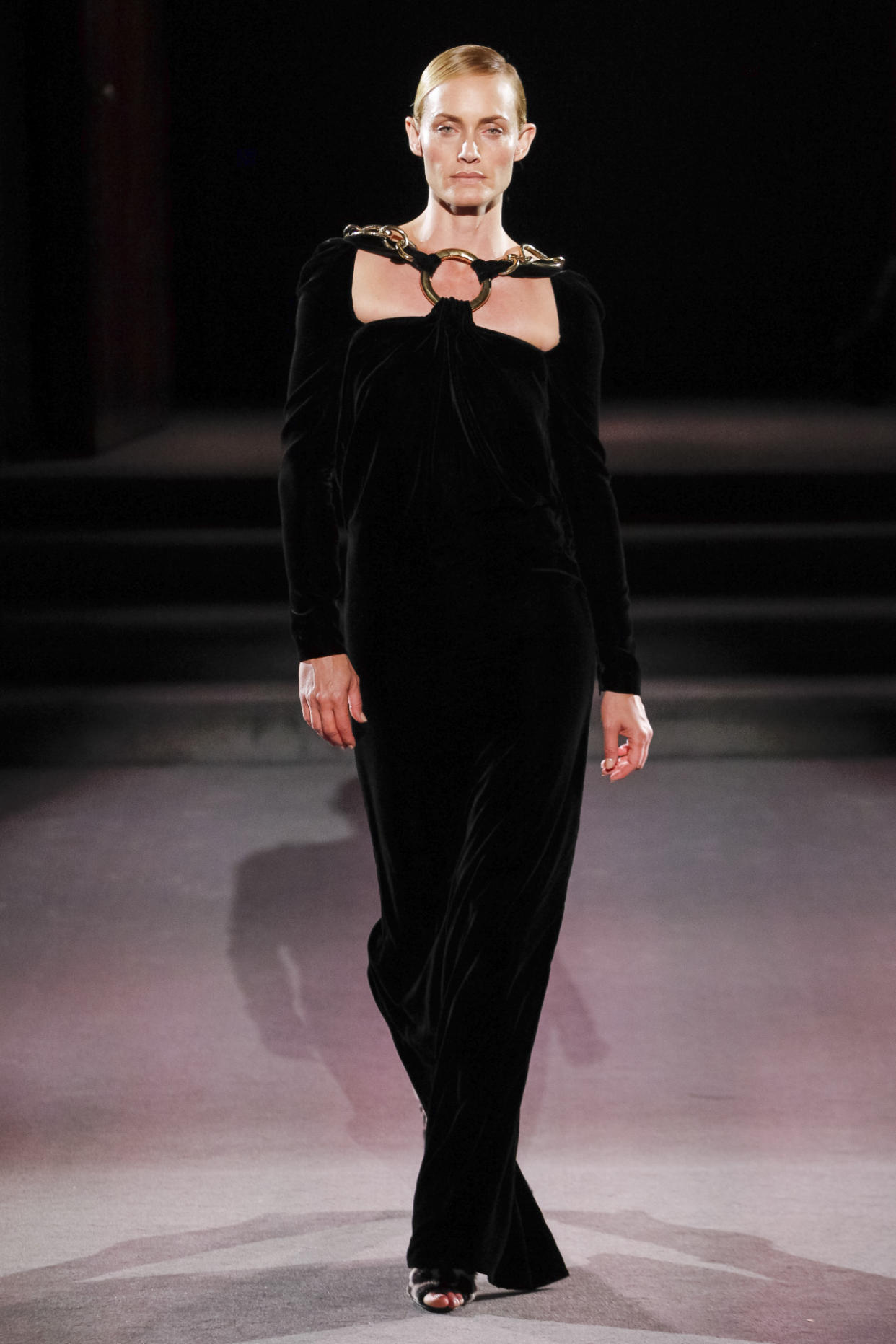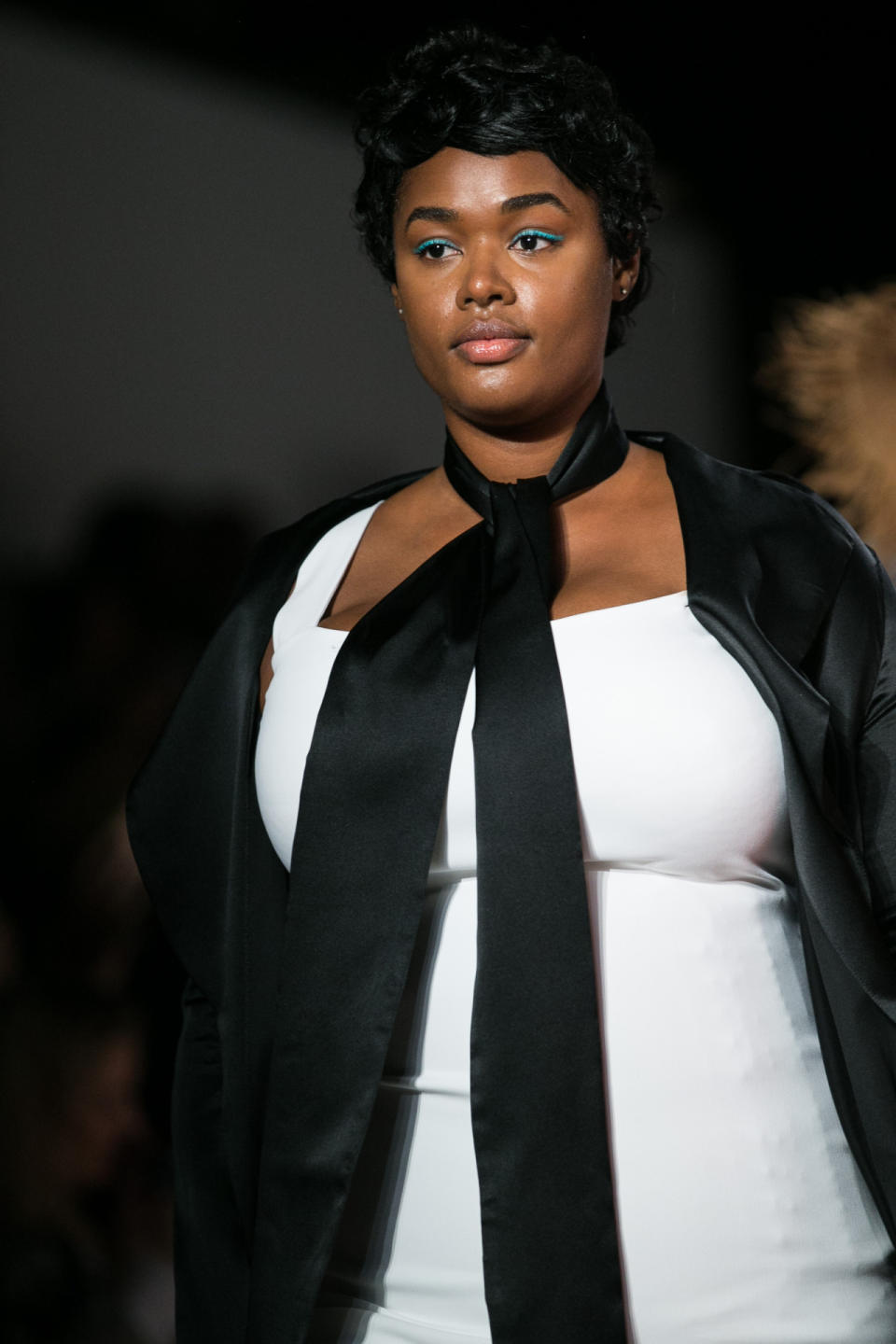Is Runway Diversity Finally Moving Past Tokenism?

In the past decade, plus-size models haven’t been completely absent from the runways. There have always been a few names you could point to, like “What about Candice Huffine on the runway for Sophie Theallet?” or “What about Ashley Graham in oh, everything this season?” But they’ve always existed as tokens — an exception to the rule that gets the designer or brand a flurry of press attention but doesn’t really alter the status quo.
But this New York Fashion Week, diversity on runways seems to be approaching a tipping point.
In addition to turning fashion industry norms on their heads by debuting a “see now, buy now” collection, Tom Ford cast 42-year-old Amber Valetta and 38-year-old Liya Kedebe alongside more expected choices like Gigi Hadid and 18-year-old Lucky Blue Smith. Kedebe, who was born in Ethiopia, was also the first black woman to get an Estée Lauder contract.
Designer Christian Siriano himself cast five plus-size models to walk along with straight-size models, and women of varying ethnicities, creating what Coco Rocha called “one of the most diverse shows in all of fashion.” And while he didn’t call attention to his choices by pushing some kind of saccharine body-positive campaign, his actions are earning kudos nonetheless.
Related: 11 Models We’d Love To See Add Diversity to New York Fashion Week’s Runways
Siriano’s inclusiveness comes on the heels of an article written for The Washington Post by his former TV mentor Tim Gunn, lambasting the fashion industry for its attitude toward plus-size women. Gunn describes industry insiders saying things like “I don’t want her wearing my clothes” and “She won’t look the way I want her to look.” And he doesn’t think a sprinkling of diversity is making progress. As he says of Project Runway’s plus-size designer win last season, “A nod toward inclusiveness is not enough.”

It seems that Siriano at least is attempting to avoid that “nod” by creating a truly diverse and integrated runway. Incidentally, both Siriano and Theallet met models while collaborating with Lane Bryant which suggests the power of designer collaborations with plus-size brands to influence mainstream fashion.
Of course, the women mentioned above are all still exceptionally beautiful working models — but at J. Crew, even that standard was left behind when the brand decided to cast staff members, family and friends in its Spring 2017 presentation. The stylish but non-model cast included people of different ages, races, sizes and body types — there’s even a pregnant woman included.
Related: Diversity on the Runway: Progress, But Not Enough
It’s a smart move from a populist brand and along with Siriano, Tom Ford and others who made diversity a priority this fashion week, just might represent the future of fashion. Fashion journalists have been exclaiming in headlines over the “unusual” casting and shows in never-before-seen ratios: designer Tracy Reese used more non-models than models in her Spring 2017 show and introduced even further extended sizing. Ekhaus Latta blended models with artists and friends, the latter of whom ranged in age, race and body size, not to mention holding their show in an LES park. And of course, Kanye West, despite courting controversy every step of the way, has been reliably doing more to put women of color on the runway than anyone with his Yeezy fashion shows.
It’s a lot of change to see in one season, but the average consumer today may well be too sophisticated for the old aspirational tactics. They want to see clothing on people who look like them, worn how they would wear it in their everyday lives, and aim to be included in the conversation. There’s no denying that exclusion is built into the institutional DNA of the fashion industry, but there is hope that the trickle of one-offs may finally be building into a sea change.
Related: Here’s What Naomi Campbell Has To Say About Diversity in Fashion
As Tim Gunn put it in his editorial: “Today’s designers operate within paradigms that were established decades ago, including anachronistic sizing. (Consider the fashion show: It hasn’t changed in more than a century.) But this is now the shape of women in this nation, and designers need to wrap their minds around it.”
Hopefully this season’s diverse shows is evidence that designers are wrapping their heads around it. We’re certainly overdue for a change.
Follow us on Instagram, Facebook, and Pinterest for nonstop inspiration delivered fresh to your feed, every day.

